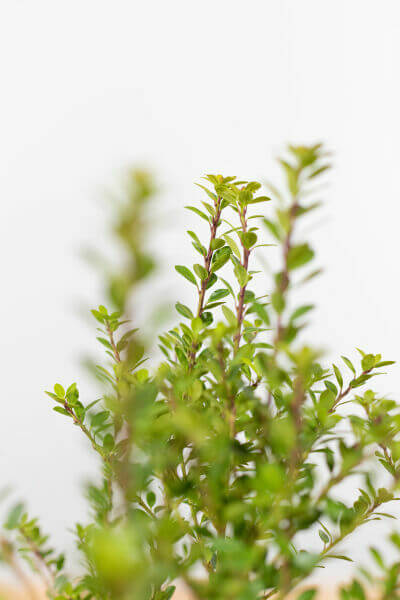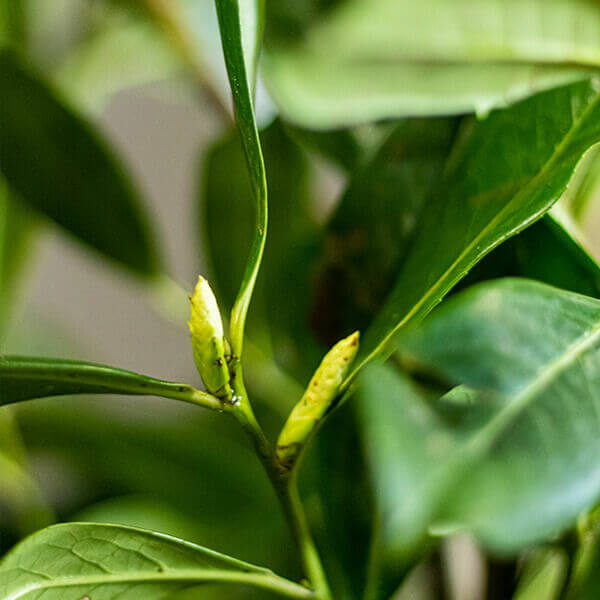Top Hedge Plants For Your Garden
Enhance your garden's attraction with rich hedge varieties such as Yew (Taxus), Thuja, Laurel, Photinia, and Bamboo, commemorated for their structural integrity and ecological benefits.
Yew and Thuja supply evergreen coverage and winter season resilience, while Laurel provides quick growth and broad, fragrant leaves.
Photinia includes seasonal charm with its vibrant red foliage, and Bamboo provides a low-maintenance, tranquil ambiance.
These hedges enhance air quality, lower noise, and produce tranquil, personal areas.
Correct planting, spacing, and maintenance guarantee energetic growth and environmental consistency.
Check out how these lush varieties can raise your garden's appeal and well-being.
Key Takeaways
Transform Your Garden With Lush Hedge Varieties
- Select Yew for its thick, evergreen development and unparalleled longevity.
- Select Laurel for its quick development and broad leaves, making sure fast privacy.
- Choose Photinia for its vibrant seasonal foliage, which turns a striking dark red.
- Use Bamboo for a low-maintenance, winter-hardy hedge with visual appeal.
- Area plants 2-3 per meter and prune frequently for optimum development and health.
Popular Hedge Plants
When changing a garden with lush hedge varieties, it's vital to consider popular hedge plants such as Yew, Thuja, Laurel, and Photinia due to their distinct attributes and advantages.
Yew (Taxus) is extremely respected for its longevity and thick, green development, making it a prime option for withstanding landscapes.
Thuja is kept in mind for its evergreen foliage and robust winter durability.
Photinia includes seasonal vibrancy with red leaves that darken with time, developing vibrant visual appeal.
Laurel uses fast growth and fragrant, broad leaves, ideal for quick personal privacy.
In Addition, Bamboo is an excellent choice for ambiance, offering a low-maintenance, winter-hardy choice that enhances the garden's aesthetic with its classy, swaying walking canes.
These choices deal with a range of horticultural needs and choices.
Advantages of Garden Hedges
Garden hedges provide a wide variety of benefits, making them an important addition to any landscape. These natural barriers are economical to execute and provide significant wind defense, improving air circulation and adding to noise reduction. The thick foliage of hedges like Thuja and Beech ensures personal privacy by obstructing presence, developing a remote and serene environment.
Hedges also play an important role in microclimate policy, offering a stable environment that promotes plant development and reduces temperature level changes. Their detailed leaf structures filter pollutants, enhancing air quality and contributing to a much healthier garden environment.
Moreover, hedges master sound decrease, absorbing and deflecting acoustic waves to lower ambient noise levels. This dual performance of supplying both visual and acoustic personal privacy boosts the overall serenity and visual appeal of any garden.
Planting and Upkeep Tips
For an effective hedge, meticulous preparation of the planting area is crucial. Make sure the soil has proper pH and drain to support strong root development.
Area the plants properly for the selected types. Water the hedge frequently throughout its preliminary development stage, changing as required with seasonal modifications.
Execute a methodical insect control and disease avoidance technique, using natural or chemical treatments when required. Regularly inspect for aphids, termites, and fungal infections.
Apply mulch to keep moisture and reduce weeds. Seasonal pruning promotes dense development and air flow, important for plant health.
Following these standards will help you cultivate a vibrant, properly maintained hedge that improves the charm of your garden.
Spacing and Cutting Standards
Spacing and Trimming Standards
Proper spacing and cutting are essential for cultivating healthy, aesthetically appealing hedges. Sufficient spacing makes sure each plant receives enough nutrients, light, and airflow.
Follow these standards for optimal hedge upkeep:
- Spacing: Position hedge plants 2-3 plants per meter to motivate robust growth.
- Pruning Strategies: Regular pruning is vital for maintaining preferred hedge height and shape. Trim brand-new development in summertime and cut back older wood throughout winter season.
- Seasonal Care: Adjust cutting schedules and techniques according to seasonal requirements to guarantee plant health.
- Hedge Height: Frequently monitor and cut to maintain the preferred hedge height and attain uniform looks.
Abiding by these steps will ensure your hedge prospers, boosting both the appeal and functionality of your garden.
Picking the Right Hedge
Choosing the Right Hedge
Choosing the suitable hedge includes evaluating elements such as fully grown height, foliage density, and ecological strength. Effective hedge plant selection requires understanding each types' development attributes and site-specific adaptability.
For example, Yew (Taxus) offers outstanding longevity and dense growth, while Thuja is noteworthy for its winter season strength. In addition, thinking about upkeep requirements is crucial; fast-growing species like Laurel or Privet need routine cutting, whereas low-maintenance options like Bamboo or Ivy might be preferable for those looking for very little maintenance.
Environmental factors such as soil type, light accessibility, and moisture conditions ought to also direct the selection process. This careful approach makes sure the selected hedges will prosper, offering both visual and functional advantages to the garden landscape.
Shipment and Planting Recommendations
To guarantee your hedge plants flourish, they should be delivered by specialized couriers and planted immediately upon arrival.
Follow these vital steps for successful planting:
- Soil Preparation: Improve the soil with natural matter to improve drainage and nutrient material.
- Planting Depth: Produce a trench twice the width and equivalent to the depth of the root ball.
- Watering Methods: Water thoroughly after planting, keeping the soil consistently wet but not saturated.
- Mulching: Apply a layer of mulch to retain wetness and suppress weeds.
Customer Assistance and Service
Provided the crucial function of timely help in horticultural pursuits, our client support group is offered six days a week through telephone, e-mail, and social media to use professional advice and promptly deal with any issues. Their commitment to fast reaction times makes sure client satisfaction by solving inquiries connected to plant health, ideal planting methods, and upkeep schedules.

Reaction Time
Telephone
This detailed support group, reinforced by a stellar 9.3/ 10 consumer ranking, highlights our commitment to enhancing the gardening experience for every customer.
Often Asked Questions
How Long Does It Consider Hedge Plants to Establish?
Hedge plants generally need one to three years to become totally established, with the precise duration differing by types and growing conditions.
Efficient care throughout this vital period is necessary for robust growth. Consistent watering, watchful weed control, and appropriate fertilizer application are essential in promoting strong root development.
For instance, fast-growing species like Laurel might develop more quickly, while slower-growing ranges such as Yew might take longer. Persistent maintenance speeds up the establishment process, leading to thick and healthy hedges.
What Are the Best Hedge Plants for Personal Privacy?
The concern of the finest hedge plants for personal privacy includes examining evergreen and deciduous options.
Evergreen hedges like Thuja, Laurel, and Cypress provide year-round coverage, making sure continuous personal privacy.
On the other hand, deciduous hedges such as Beech offer seasonal personal privacy, shedding leaves in colder months.
Key upkeep ideas for personal privacy hedges include routine trimming, fertilizing in spring, and appropriate spacing-- typically 2 to 3 plants per meter.
In addition, consistent watering and persistent weed removal are essential for promoting healthy, thick development.
Can Hedge Plants Attract Wildlife to My Garden?
Yes, hedge plants can bring in wildlife to your garden by offering important advantages like shelter, food, and nesting sites, thereby improving local biodiversity. Yew, holly, and laurel are excellent for bring in birds, while ivy supports a variety of pests.
However, it is essential to keep in mind that there are some disadvantages, such as increased upkeep to manage insects and routine upkeep. Thoroughly picking and maintaining hedge ranges can assist balance these advantages and drawbacks, ultimately promoting a lively and sustainable community in your garden.
Exist Any Blooming Hedge Plants Available?
Yes, there are flowering hedge plants available that can improve the charm of your garden.
For instance, Elaeagnus, also known as Olive Willow, produces aromatic white flowers in the fall, including a touch of elegance.
Photinia, another popular choice, showcases dynamic red leaves that develop into an abundant green, developing a dynamic visual effect throughout the seasons.
To guarantee these plants prosper, it's vital to practice proper pruning methods and seasonal maintenance, such as trimming brand-new development in the summer season and cutting back in the winter.
These measures will help preserve the health and aesthetic appeal of your flowering hedges.
How Do I Avoid Insects in My Hedge Plants?
To avoid insects in hedge plants, use natural bug control approaches and keep correct hedge care. read more Present beneficial insects like ladybugs, which prey on hazardous insects, to develop a well balanced community.
Routinely examine your hedges for indications of invasion and without delay get rid of any afflicted parts to avoid the spread. Guarantee the health of your hedges by using balanced fertilizers and offering adequate water.
Utilize mulching to retain soil wetness and correct spacing to minimize plant stress and promote robust growth. These practices collectively help in minimizing bug concerns and preserving a healthy hedge.
Conclusion
In essence, selecting the right hedge ranges such as Yew, Thuja, and Laurel can change any garden into a peaceful sanctuary. These plants supply year-round plant, improve aesthetic appeal, and offer useful benefits like sound reduction and wind security.
Appropriate planting methods, precise spacing, constant watering, and seasonal cutting are vital for optimal development.
Reputable delivery services and expert customer assistance make sure a smooth experience from purchase to planting, making it simpler than ever to elevate your outside space.
Garden hedges offer a multitude of advantages, making them a valuable addition to any landscape. These natural barriers are cost-effective to carry out and offer significant wind defense, improving air circulation and contributing to sound reduction. The thick foliage of hedges like Thuja and Beech guarantees privacy by blocking presence, producing a serene and remote environment.

Pruning Strategies: Routine pruning is essential for maintaining wanted hedge height and shape. Cut brand-new growth in summer and cut back older wood during winter season.